University of Strathclyde
Type of resources
Topics
Keywords
Contact for the resource
Provided by
Years
Formats
Representation types
Update frequencies
Scale
Resolution
-
The dataset contains spectra of Poly(hydroxybutyrate) – PHB – systems performed at ambient temperature. The data was collected using Fourier Transform Infrared Spectroscopy (FTIR), using two types of clay (10A and 25A) that act as a nucleating agent in polymer matrix. Full details about this dataset can be found at https://doi.org/10.5285/6b29f79b-c534-40f2-bbb1-8b4dbb397af2
-
The dataset contains information on isothermal crystallisation of Poly(hydroxybutyrate-co-valerate) – PHBV – systems performed at different temperatures. The data was collected using Fourier Transform Infrared Spectroscopy (FTIR), using poly(hydroxybutyrate) – PHB – as well as PHBV systems of various hydroxyvalerate (HV) content – 7, 12, and 21 mol%. The temperature range span from ambient temperature to 150 °C. Full details about this dataset can be found at https://doi.org/10.5285/cfcc0e31-e2ce-450b-a292-3427de06a687
-
This dataset contains files of isothermal crystallisation of polylactic acid (PLA). The data was collected using a Fourier Transform Infrared (FTIR) spectrometer, with the temperature range spanning from 80 to 150 °C. Full details about this dataset can be found at https://doi.org/10.5285/4a568f41-ab14-475c-b13e-3499277fef79
-
This dataset contains data recording kinetics of the spherulite growth in poly(hydroxybuterate)-based systems with various amounts of copolymer and additive (plasticiser and/or filler). The experiments were performed using polarised light microscopy. The experiments were conducted at the University of Strathclyde. Full details about this nonGeographicDataset can be found at https://doi.org/10.5285/1c2fe14e-0aa4-4f4a-b827-57b96deeda0d
-
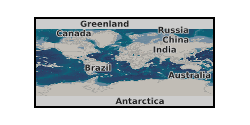
The aim of this project is to develop validated and computationally efficient shelter and escape models describing the consequences of a carbon dioxide (CO2) release from Carbon Capture and Storage (CCS) transport infrastructure to the surrounding population. The models will allow pipeline operators, regulators and standard setters to make informed and appropriate decisions regarding pipeline safety and emergency response. The primary objectives planned to achieve this aim are: 1.To produce an indoor shelter model, based on ventilation and air change theory, which will account for both wind and buoyancy driven CO2 ventilation into a building. The model will be capable of incorporating varying cloud heights, internal building divisions, internal and external temperature differences and impurities. 2.To create an external escape model that will determine the dosage received by an individual exposed to a cloud of CO2 outdoors. The model will be capable of incorporating multi-decision making by the individual in terms of the direction and speed of running, wind direction, the time taken to find shelter and the time required to make a decision, on becoming aware of the release. 3.To build a Computational Fluid Dynamics (CFD) model describing the effects of ingress of a CO2 cloud into a multicompartment building. 4.To validate the indoor shelter model and the CFD model against experimental test data for a CO2 release into a single compartment building. 5.To validate the indoor shelter model against further CO2 ingress scenarios modelled with CFD. 6.To conduct a sensitivity study using the shelter and escape models to calculate the dosage that an individual will be expected to receive under different conditions building height, window area, wind direction, temperature gradient, wind speed, atmospheric conditions, building size, running speed, direction of travel and reaction time. 7.To illustrate how the output from the models, in terms of dosage, can be used as input to Quantitative Risk Assessment (QRA) studies to determine safe distances between CO2 pipelines and population centres. 8.To demonstrate how the output from the models, in terms of dosage, can be used as input to the development of emergency response plans regarding the protection afforded by shelter and the likely concentrations remaining in a shelter after release. 9.To disseminate the findings of the research to relevant stakeholders through publication of academic journal papers as well as presentations at conferences, UKCCSRC meetings and relevant specialist workshops. Grant number: UKCCSRC-C2-179.
-
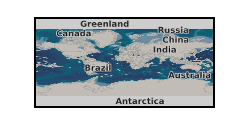
The project will three-dimensionally image hydraulically conductive features in the reservoir, caprock and overburden of an active CO2 injection site: the Aquistore site, Canada. Our research will provide important information on potential migration pathways within the storage complex to inform future monitoring strategies at the Aquistore site and at future storage sites. We will monitor micro-seismic events prior to, and during, CO2 injection using a three-component nanoseismic surface monitoring array which will complement data collected by the existing geophone network at the site. This analysis can be used to provide deep focussed monitoring information on permeability enhancement near the injection point. As injection continues it will also enable imaging of any flowing features within the caprock. Grant number: UKCCSRC-C1-19.
-

This poster on the UKCCSRC Call 1 project 3D Mapping of Large-Scale Subsurface Flow Pathways using Nanoseismic Monitoring was presented at the CSLF Call project poster reception, London, 27.06.16. Grant number: UKCCSRC-C1-19. Injection of fluids into geological formations induces microseismic events due to pressure changes causing either opening mode or shear mode fracturing. Injection for CO2 storage is designed to be well below the pressures required for hydraulic fracturing. Due to the inherent heterogeneity of geological formations, some existing structures will be critically stressed so small microseismic events are inevitable. Current reservoir monitoring strategies either examine time-lapse variations in the rock’s elastic properties (4D seismic) over diffuse areas, or aim to detect leakage from diffuse and point sources at the seabed (e.g. the QICS project). The aim of the project is twofold: • test the potential of a new technology (nanoseismics) for passive seismic monitoring that aims to image focused flow pathways at depth of an active CO2 injection site: the Aquistore site, Canada; • use a multi-disciplinary approach to interpret passive seismic data sets obtained during operation of the same site.
-
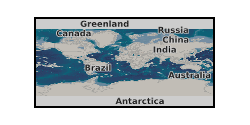
This presentation on the UKCCSRC Call 1 project, Flexible CCS Network Development, was presented at the Workshop1ES, 30.04.14. Grant number: UKCCSRC-C1-40.
-
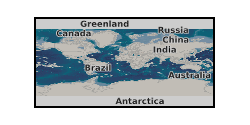
This dataset provides the linepacking times that have been generated for a set of pipeline dimensions, flow rates, lengths and pressure conditions. This work has been funded by the UK Carbon Capture and Storage Research Centre within the framework of the FleCCSnet project (UKCCSRC-C1-40). The UKCCSRC is supported by the EPSRC as part of the Research Councils UK Energy Programme (https://doi.org/10.1016/j.ijggc.2017.06.002). This dataset forms the basis of the work and analysis presented in the paper: Aghajani, H, Race, JM, Wetenhall, B, Sanchez Fernandez, E, Lucquiaud, M & Chalmers, H 2017, 'On the potential for interim storage in dense phase CO2 pipelines' International Journal of Greenhouse Gas Control.
-
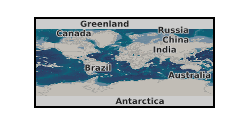
This poster on the UKCCSRC Call 2 project Shelter and Escape in the Event of a Release of CO2 from CCS Infrastructure (S-CAPE) was presented at the UKCCSRC Manchester Biannual Meeting, 13.04.2016. Grant number: UKCCSRC-C2-179.
 NERC Data Catalogue Service
NERC Data Catalogue Service